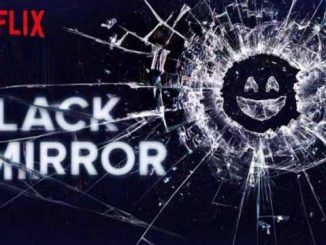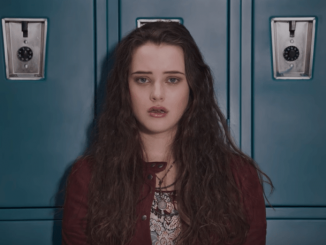
Editor-In-Chief, Cheyenne Dorsagno |
“Santa Clarita Diet” is a horror-comedy Netflix series created by Victor Fresco, starring Drew Barrymore as the newly undead Sheila and Timothy Olyphant as her loving husband Joel.
The show has been getting fairly good reviews with an 8/10 on IMDb and an 86 percent approval rating by Google users. On the other hand, it has a 65 percent review on Rotten Tomatoes, which more aptly reflects my feelings about it. Even though horror and comedy seem like opposing genres, they have made an interesting mix in movies and TV series like “Split,” “Scream,” “Beetlejuice,” “Young Frankenstein,” and “Scream Queens.” “The Santa Clarita Diet,” however, has an awkward, off-putting quality that does not carry a plot very well.
The show has oddly fast-paced and choppy transitions between plot points. All things considered, this is somewhat caused by the new impulsive, carefree personality Sheila adopts after becoming one of the undead. Interestingly enough, one critic, Laurel Hiatt. likened this behavior to a stereotypical midlife crisis; Sheila becomes a member of the fun mom squad, buys a fancy new car, and finds a revived sexual appetite.
Nathan Fillion, guest starring as Sheila’s coworker Gary, is the most exciting part of the show as he proved to be an effective, funny, and charming actor in Castle. Sadly, he doesn’t make it through the first episode. Even Drew Barrymore should attract some viewers after capturing perfectly quirky characters in Adam Sandler movies like “50 First Dates,” “The Wedding Singer,” and even “Blended,” which wasn’t all that bad for one of Sandler’s newer, post-classic films. However, these actors seem obstructed by the blunt, uncreative dialogue.
Even though the new, animalistic Sheila is supposed to act on her emotions, she passively stands by as her husband is challenged by Gary, who has the audacity to flirt with Sheila in front of Joel and eventually demands that Joel leave after having a heated private discussion with his wife at a club. It’s not until the end of the episode that Sheila suddenly confronts Gary, going from zero to 100; she pretends to seduce him by sucking on his fingers and then abruptly bites them off. Even Gary, with blood squirting from his shredded nubs, seems a little underwhelmed. And Joel, who walks in on her covered in blood as she feasts on his guts, doesn’t seem any angrier than an exasperated housewife dealing with her goofy husband on some other quotidian family sitcom. The characters seem to adapt to the changing circumstances all too easily after concluding that Sheila is, basically, a zombie.
The series asks people to reimagine the real world as one in which humans’ imagined fears have suddenly come to life, as done in shows like “The Walking Dead” and “X-Files.” Viewers can easily give into this request, but it’s hard to maintain the suspension of disbelief when these relatable Average Joe characters don’t engage in the conflict like any normal or even realistically abnormal person would. That’s not to say that there aren’t any shows that haven’t experimented with nonsensically behaving characters, but in other shows such as the satire “Scream Queens,” the acting and dialogue was more over the top to match the plot. I tend to want the story and tone to be all or nothing in terms of quirkiness rather than floating in some awkward middle ground. Just commit to the angle!
This isn’t to say that the actors didn’t exhibit any level of alarm, and they confront their emotions about this drastic change in the family dynamic more as the series goes on. Sheila’s husband does approach his breaking point in one of many funny scenes after he accidentally pulls a knob off of his kitchen appliance and suddenly smashes it to pieces. Then, the shot quickly cuts to him being a responsible adult once again, standing at the store picking out a replacement toaster oven.
Weirdly enough, Barrymore still looks pretty adorable even while she’s munching on some human flesh. “Santa Clarita Diet” had a jarring start but found its footing as the series continued. It plays with the themes of love, loyalty, desire, responsibility, morality, and happiness. It’s not too original or thought-provoking, but it’s decently entertaining.


Leave a Reply